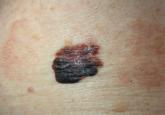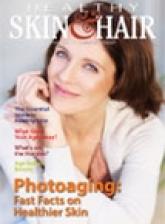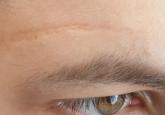In a JAMA Facial Plastic Surgery online article, Bhattacharyya et al published an article that investigated the antiaging effects of 4 different commercial topical agents. Hairless mice were used as subjects and skin samples were collected from them. The cohorts included nonirradiated mice (control population), mice irradiated with UVB for 8 weeks, mice irradiated with UVB and then exposed to a topical cosmeceutical applied for 5 weeks, and mice who were exposed to UVB but not exposed to cosmeceuticals. The 4 cosmeceuticals were as follows: antioxidant mixture consisting of ferulic acid (CE Ferulic with L-ascorbic acid, alpha-tocopherol, and ferulic acid; SkinCeuticals); peptide cream (Replenix Peptide Cream with acetyl hexapeptide-8, acetyl dipeptide-1, palmitoyl tripeptide-3, and Macrocystis pyrifera extract; Topix Pharmaceuticals, Inc); estrogen cream (Estriol-M 0.3% facial serum; Madison Pharmacy Associates, Inc.); and retinoic acid (Renova with tretinoin 0.05%; Ortho Dermatological).
The exposure to UVB (80% UVB radiation in the range of 280–340 nm) was shown to induce wrinkle formation after 13 weeks. Epidermal thickness, sebocyte counts, and proliferating cell nuclear antigen were measured as outcomes. The authors concluded that the peptide cream, antioxidant mixture, estrogen cream, and retinoic acid cosmeceuticals attenuated this radiation-induced wrinkle formation. There was a statistical trend of reversal of irradiation-induced epidermal thickness with the peptide cream and antioxidant mixture. The retinoic acid augmented epidermal width and sebocyte counts, and the estrogen cream was effective in restoring surface features but enhanced thickness of epidermis in irradiated specimens. All of the groups had higher proliferating cell nuclear antigen scores, except the peptide group, which brought it down to control level.
What’s the issue?
Photoaging is a common cosmetic concern among many patients who seek to find a topical treatment. The peptide cream, antioxidant mixture, and estrogen cream reduced wrinkle formation in 5 weeks. The estrogen cream and retinoic acid treatment actually augmented the epidermal thickness to a level higher than after irradiation. The authors concluded that of the 4 cosmeceuticals tested, the peptide cream and the antioxidant mixture were the most effective overall in reversing photoaging effects, while the retinoic acid was deemed least effective. This study provides a good in vivo look at the histologic effects of common cosmeceutical preparations. With this evidence, what would you prescribe for photoaging?
We want to know your views! Tell us what you think.





